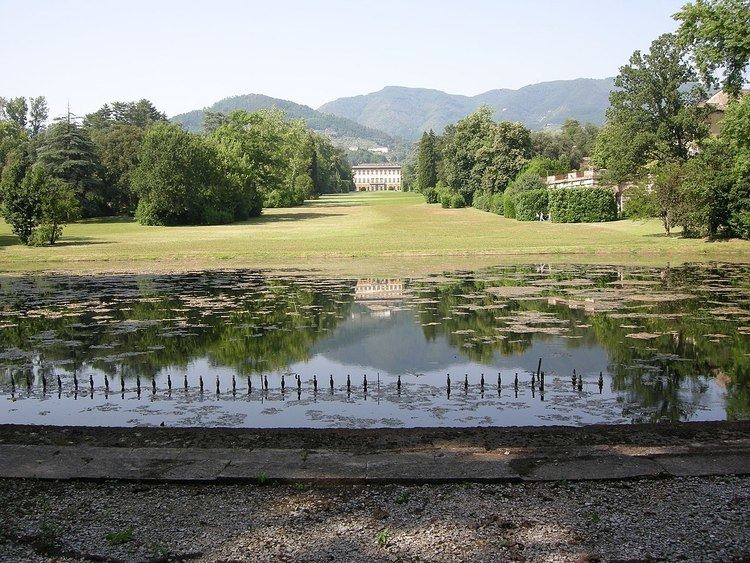Country Italy Completed 19th-century Phone +39 0583 30108 | Construction started 15th-century Province Province of Lucca | |
 | ||
Town or city Capannori, Province of Lucca, Tuscany Address Via Fraga Alta, 2, 55012 Marlia, Capannori LU, Italy Architectural styles Baroque architecture, Neoclassical architecture Similar Villa Torrigiani, Villa Mansi - Segromigno in Monte, Basilica of San Frediano, Villa Garzoni, Museum of Villa Mansi | ||
The Villa Marlia or Villa Reale di Marlia — a late-renaissance palazzo or villa, and its estate's property that includes renowned gardens and adjacent villas and follies within the compound. It is located in Capannori, in the Province of Lucca, west of Florence, in the northern Tuscany region of Italy.
Contents
Villa Marlia
The 15th century Italian Renaissance villa was in the Buonvisi family from 1517 to 1651, left relatively unchanged. In the 17th century the Palazzina dell’Orologio, with dominant clock tower, was constructed. The gardens were created in the second half of the 17th century, in the Giardino all'italiana style, influenced by Italian Renaissance gardens and Baroque gardens.
Features
Villa Reale di Marlia
In 1806 the sister of Napoleon, Elisa Bonaparte Baciocchi Princesse Française, purchased the entire complex. She acquired the adjacent Villa del Vescovo with its sixteenth-century Italian Renaissance garden and grotto, and other bordering properties, which doubled the estate's size.
Reale (royal) joined the property's name, to become Villa Reale di Marlia, or locally Villa Reale. The property had become an official royal residence to serve her upon becoming the Duchess of Lucca and Princess of Piombino, Grand Duchess of Tuscany, and Countess of Compignano — with the power as the monarch to rule over these Tuscan territories granted by Napoleon.
In 1811 Elisa Bonaparte had the villa renovated in the Neoclassical style, and the Neoclassical pair of palazzine gatehouses and entrance elements were built. From the Villa del Vescovo gardens the elaborate nymphaeum pavilion, Grotta del Dio Pan or Pan’s Grotto, was left in Baroque splendor.
The lower original Italian gardens were redesigned into an expansive English landscape park, then in fashion. It has the Laghetto or Small Lake, as a reflective focal point and water garden, with a broad terrace accented by statues. Bonaparte added naturalistic groups of trees to transition into the woodland gardens. In 1814, after her brother's downfall and exile, Bonaparte was replaced as monarch by the victorious Bourbons, and Marie Louise Borbón of the House of Bourbon-Parma became the Duchess of Lucca and owner of Villa Reale di Marlia. Lorenzo Nottolini was commissioned to construct the Specola, an observatory, in the lower garden of the landscape park.
20th-21st centuries
The estate was acquired by the Count Pecci—Blunt family in 1923, who restored the villa and follies, and the gardens were replanted with the original plant selections. The Giardino Spagnolo, a Moorish Spanish Garden with fountains and rills, and Art Deco design influences, was created to connect the 17th century Palazzina dell’Orologio and Grotta del Dio Pan.
In 2015 the Villa Reale Di Marlia was sold through Lionard Luxury Real Estate but no sale price has been revealed. The 18,000sq m building on 19ha of land is going to be converted into a luxury hotel.
The estate was later opened for viewing, and remains accessible for guided public tours by scheduled arrangements.
